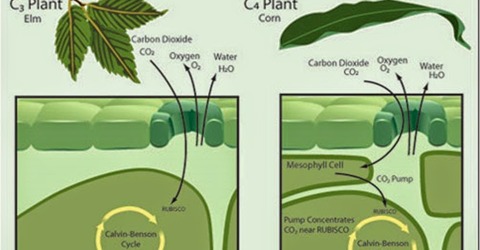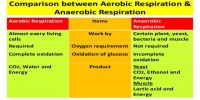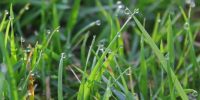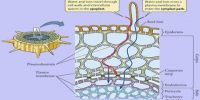Two recognized paths are present in photosynthesis for the production of carbohydrate in the dark reactions. First one is Calvin and Bassham path way which occurs in C3 plants and second one is Hatch and Slack path way which takes place to C4 plants. C3 plants go through the Calvin cycle, taking in carbon dioxide through the leaves’ minuscule pores, called stomata. A C4 plant is a plant that cycles carbon dioxide into four-carbon sugar compounds to enter into the Calvin cycle.
Therefore, the whole plant kingdom can be divided into C3 and C4 plants on the basis of two paths of dark reaction.
C3 plants:
- 99% of the photosynthesizing plants of the world are C3 plants n.
- In these plants, 3-carbon phosphorglyceric acid as formed as the first permanent compound during the formation of carbohydrate in the dirk reaction. Because of this being a 3-carbon compound, this type plants are said to be C3 plant
- No separate thick layer of mesophyll cells is present around the bundle sheaths of leaves of C3
Example: Beans, rice, wheat, potatoes. most temperate crops. all woody trees.
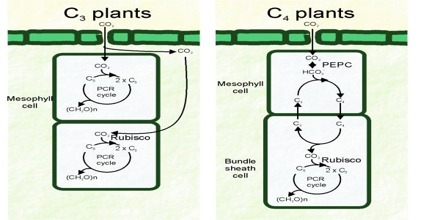
C4 Plants:
- Only 1% of the photosynthesizing plants of the world are this type
- In these plants, 4-carbon oxaloacetic acid is formed as the first compound during the formation of carbohydrate in the dark reaction. Because of this substance being a 4-carbon compound, this type of plants are said to be C4
- Thick layers of mesophyll cells are present around the bundle sheaths of the leaves of C4
- The plants of tropical countries, such as- sugar cane, maiz are considered to be C4
Example: corn, sugarcane, amaranth, mostly grasses and some shrubs.
